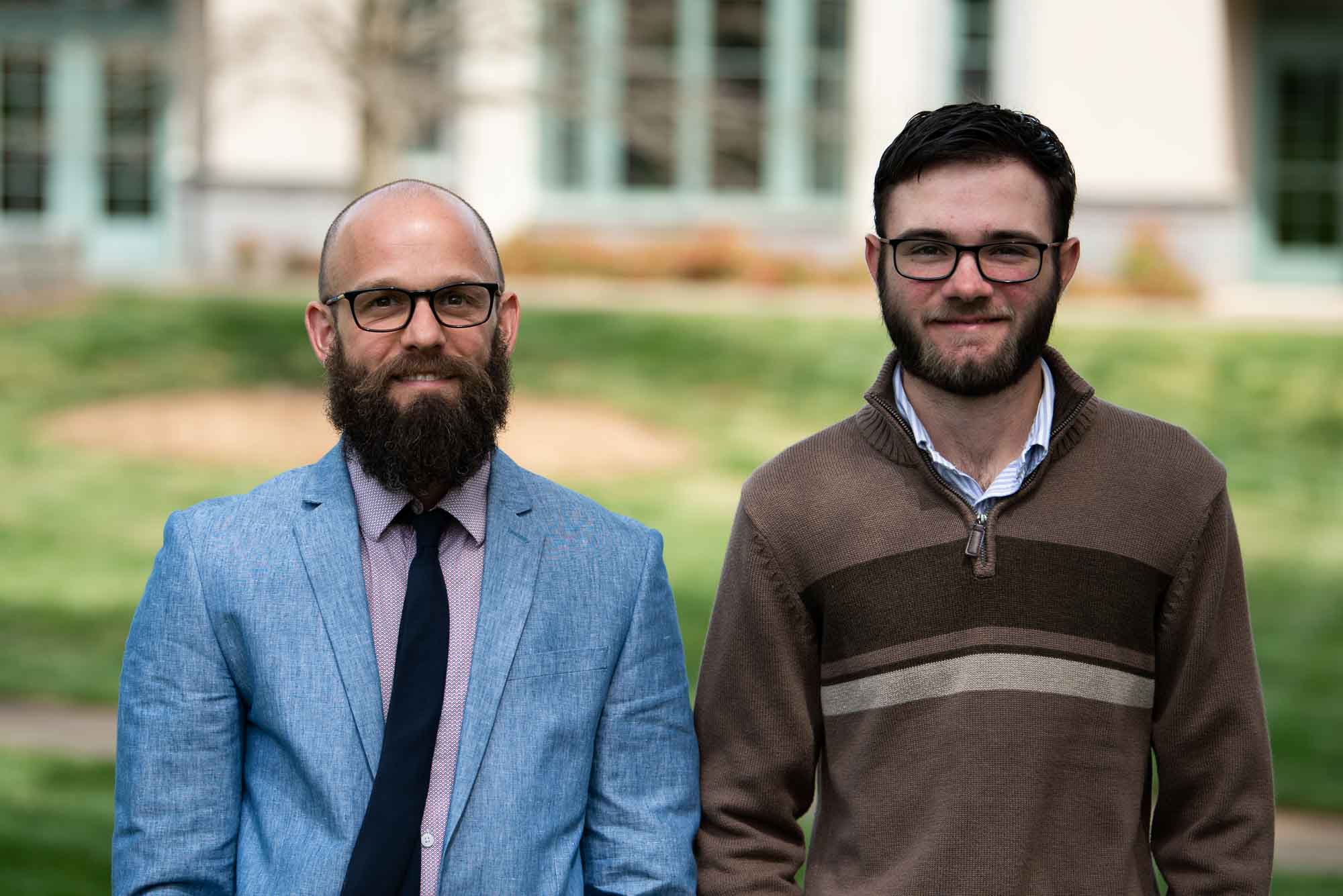The numbers add up: Chandler Thomas has a bright future ahead.
The SMC sophomore, who will graduate Saturday, May 4, with an Associate Degree in Science, recently completed a graduate-level theoretical math research project which delved into concepts of probabilities that may have real-world sports applications.
Chandler Scott Thomas, 19, started applying math to sports at the age of 10. By high school, he was the statistician for his football team. "I have spreadsheets on my computer predicting the outcomes of sporting events," he says.
As a member of SMC’s golf team, the sophomore uses stats in nearly every round of golf he plays, including how many greens he hits and putts he takes per round. He uses the numbers to improve his scores, he says.
After finishing a sophomore-level Calculus class in his freshman year at SMC, Thomas studied independently with Dr. Benjamin Sloop, professor of mathematics. Upon completing a homework assignment to predict the probability of getting a desired result when rolling two six-sided dice, Thomas became interested in applying similar math in real life. He wondered, if you have two three-person golf teams, what might be the average minimum shots of the players?
To answer that question, Thomas constructed a probability experiment using imaginary dice. "Instead of having two six-sided dice, what if there were two three-sided dice? Two four-sided dice?" explains Sloop.
If you haven’t had a math class lately, probability is the likelihood that an event will occur. For example, the probability of flipping a coin and it being heads is ½, because there is one way of getting a head (the flip), and the total number of possible outcomes is two (a head or tail).
Typically, undergraduate students learn strategies to solve proofs, using well-established theorems, Sloop says. Thomas’s project is unique because he set out to prove new math. He not only came up with his own theories, but he was tasked with creating proofs as well, which added another layer of difficulty to the project.
"In math you have to prove your conjectures," says Sloop. (In the math world, a conjecture is a statement about a pattern that has not yet been rigorously proved.) "In addition to finding answers, he has to prove that what he found is true and will always be true."
In his experiment, Thomas used a combination of technology and regression to identify patterns in rolls of his imaginary dice. Regressions is a statistics technique to find the relationships between two or more variables.
"We met for three hours each week for class, but a lot of the project required time outside class," Thomas says. He used Excel for some of the math, but much of it required more old-fashioned methods. "A lot of it is writing it down on paper and just trying to figure it out,” he notes.
As if that weren't already a lot of work, Thomas also had to learn a specific program to put his findings into a PowerPoint presentation. Since PowerPoint is designed for text and graphics, Thomas had to code his work in order to showcase the math equations.
"You can't just put math into Microsoft Word," Thomas says. "You have to use a special program called LaTeX. You have to code your homework, and if you do one thing wrong, it doesn't work."
Because of its theoretical nature, Thomas’ project was a first for Sloop. "In the past, students have done applied projects, in which they have collected data and then they analyze it," he says. "Chandler is the first student I've ever had to do a theoretical project.”
The result of Thomas’s work is a 78-page presentation titled “Undergraduate Research in Probability Theory: Minimum Two Dice,” which he hopes to present at upcoming math symposiums.
The ultimate goal for Thomas is to major complete a bachelor’s degree in math while working as a student statistician for an athletic team. As of late April, he’s narrowed his choices, but isn’t yet 100 percent committed to one school (but the probability is high).Thomas is already looking further down the road: a possible master's degree in math, leading perhaps to a dream job working with ESPN or a high-profile sports organization.
"Sports is my passion, but since I fell in love with math, I've realized combining them in some way would be ideal for me," he says.

Left to right: Dr. Ben Sloop and Chandler Thomas
